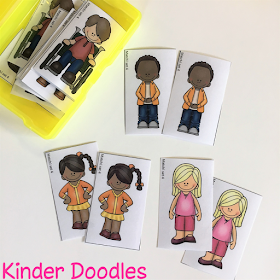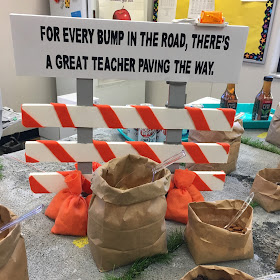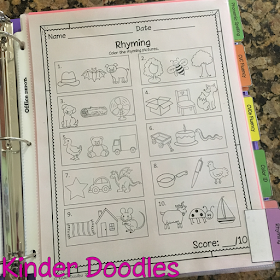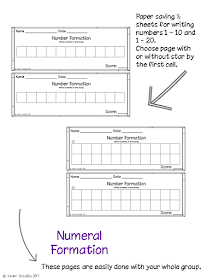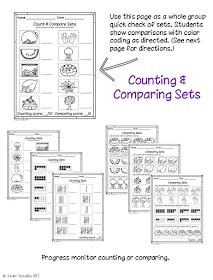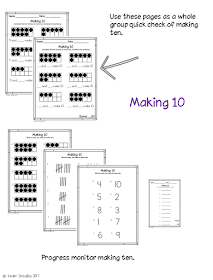This all began the first week with lots and lots of modelling and practice. We still go over the rules of independent work: 1. Walk to your station/Get a math basket. 2. Begin working right away. 3. Work for the entire time. 4. Use quiet voices. 5. Clean up quickly when you hear the chime (I set a timer on my phone)
Of course, we used simple activities that could be done with little to no instruction so the littles could work on stamina. When you don't have to spend lots of time teaching how to do the activities, your students will have more time to practice working independently. This practice took place during our Literacy Stations time, so the kids worked at the actual stations areas. (I am lucky to have a large classroom where I can have permanently set up Literacy Stations.)
The first couple of weeks we used the cards from my Beginner Stations Activities set. (Get it HERE.) Check out some pictures of my kiddos working on stamina.
Sequencing cards
Matching numbers to sets
Puzzles
Sorting
The cards in this set are also perfect for math stations, morning tubs, or early finisher activities.
This letter page is from my Back to School No-Prep set ~ get it HERE.
Read to Self
Now that our Literacy Stations are up and running pretty smoothly, I've swapped out the Beginner activities with things that take more time to do as well as a few more choices at each station. The cards are still available for early finishers. The kids already know how to use the cards, so they can grab a set of cards & work quietly as they wait for others to finish.
I use Tara West's Thematic Writing Center ~ it's amazing! The kids really enjoy it.
The Pocket Chart Center (it hangs on the end of the play fridge & mailbox cabinet, which sit back to back near. The sorting cards have been replaced with Deedee Wills' Predictable Sentences.
This cute search and find letter activity was a freebie I got somewhere (Facebook, maybe?). If you know who made it, please let me know in the comments.
Another wonderful Tara West product ~ my kiddos get to work on fine motor skills at this Literacy Station. It might not be actual literacy, but it gives their hands the exercise needed for writing.
Another old math activity from The Mailbox ~ the kids still enjoy it!
I mentioned that my Literacy Stations are in permanent locations. (The tables where some are located do double duty at other times of the day, but the literacy activities stay there.) For independent math work the kids have activities in Math Baskets or their Math Folders. The baskets are housed in four stackable shoe racks from Target. They fit perfectly under the whiteboard ~ you can see them in the background of the photo below.
Another old math activity from The Mailbox ~ the kids still enjoy it!
Tara West again. (Can you tell that I love her products?)
Tara West's Spinnin' Through the Year
We have been learning about solid shapes, so I put a bunch of them into a basket.
As you can see, my little students are doing a great job working & learning independently! Yay!

























